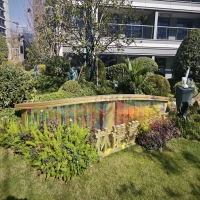Welcome to the website for landscape facilities products and knowledge.
How do landscape tables perform in environments with heavy pollution or industrial fallout?
Landscape tables are designed to endure various environmental challenges, but how do they hold up in areas with heavy pollution or industrial fallout? These outdoor furniture pieces are typically constructed from robust materials like powder-coated steel, treated wood, or high-density polyethylene (HDPE), which offer resistance to corrosive elements.
In polluted or industrial areas, landscape tables face exposure to acidic rain, soot, and chemical residues. Powder-coated steel tables, for instance, provide a protective layer that prevents rust and degradation. Similarly, HDPE tables are non-porous, making them resistant to staining and chemical damage. Regular maintenance, such as cleaning with mild detergents, can further extend their lifespan.
Another critical factor is UV resistance. Industrial zones often have higher levels of airborne pollutants that can accelerate material wear. UV-stabilized materials ensure that the tables do not fade or become brittle over time. Additionally, modular designs allow for easy replacement of damaged parts, reducing long-term costs.
For urban planners and property managers, selecting landscape tables with these features ensures longevity even in harsh conditions. Investing in high-quality, weather-resistant furniture minimizes replacement frequency and maintains aesthetic appeal in polluted environments.
In conclusion, landscape tables perform well in heavy pollution and industrial fallout when made from durable, treated materials. Proper selection and maintenance are key to their sustained performance in such demanding settings.
Related search:

Recommendation
Metal and acrylic color-changing combined curtain wall for large-scale public landscape facilities